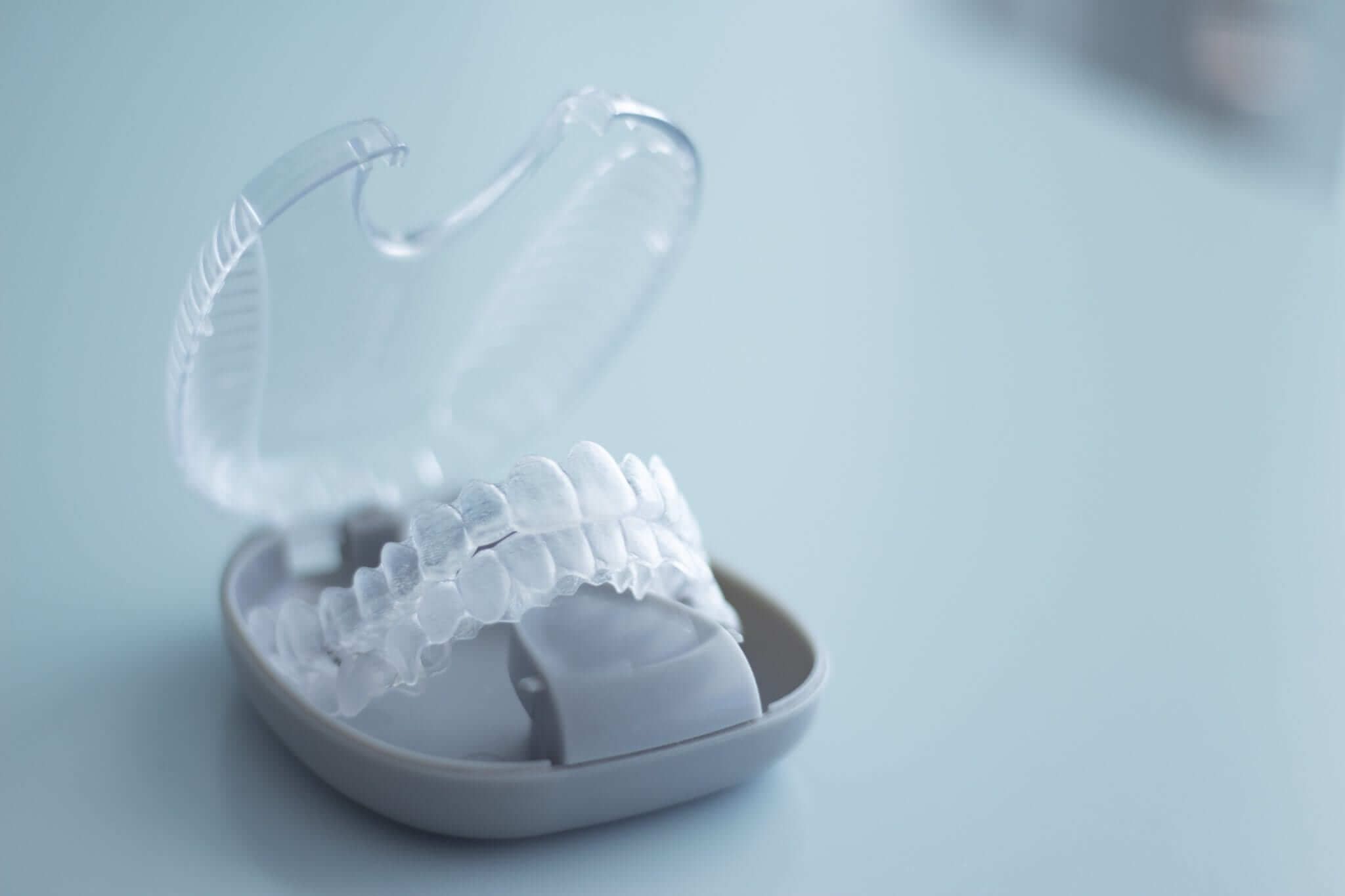Many people will eventually need orthodontic treatment to correct a misaligned bite and/or crooked teeth at some point in their lives. In fact, Humana Dental Insurance estimates that 4 million Americans are currently undergoing orthodontic treatment. Out of that 4 million, it is also estimated that 1 million are adults.
At Fedorciw, Massoumi, & Kolbig, we believe that orthodontic treatment should be fast, easy, and effective. This is why we offer our patients Invisalign® orthodontic treatment. Invisalign® uses a series of clear aligners to gradually move teeth and bite into a more optimal position.
Invisalign® was developed in 1997 by Zia Chishti, but wasn’t approved by the Food and Drug Administration until 1998. By the year 2001, as many as 75% of dentists were using the Invisalign® system and later that year Invisalign® became available for use by general dentists as well.
Since its initial development, Invisalign® has advanced its technology to address a variety of cases. Some of these include Invisalign® 1.5, Invisalign® Express 10 (uses 10 aligners), and Invisalign® Express 5 (uses 5 aligners). There are also Invisalign® G3 and G4, which can be used on more complex cases. During your consultation, our dentists can discuss which option is best for you.

Because it is a somewhat new orthodontic treatment, we often get questioned on how well in works in comparison to other, more established orthodontic methods. To fully answer this question, there are a few different factors that need to be considered such as the reasons why orthodontic treatment is needed, how orthodontic treatment works, what are the other orthodontic options, and what the treatment process is for Invisalign® and other methods.
The first thing we must look at is the reasoning behind orthodontic treatment. There are many possible reasons why one might want or need orthodontic treatment. These reasons can range from being purely cosmetic to improving function. Possible reasons why to get orthodontic treatment include:
- Improve the aesthetics of your smile
- Difficulty chewing or biting
- To discontinue mouth breathing
- To correct anatomical problems as a result of sucking the thumbs or fingers
- Shifting, clicking, protruding, or recessed jaws
- Protruding teeth
- Crooked, rotated, gapped, or crowded teeth
- When you are constantly biting your cheek or the roof of your mouth
- Teeth that do not fit together properly or at all
- Facial asymmetry
- Teeth grinding or clenching
- Inability to close lips
- To alleviate sleep apnea, speech impediments, or TMJ pain

Although there are many specific reasons for orthodontic treatment, there is also one overarching reason. This reason is simply that straight teeth and a properly aligned bite make for less dental issues in the future. Teeth that are properly spaced and not overlapping can be cleaned easier, preventing dental ailments like tooth decay and gum disease. A bite that is properly aligned will be able to function without straining or placing extra stress on the teeth. Both of these things are important when maintaining oral health.
In most cases, Invisalign® can be used to correct the concerns listed above. In fact, Invisalign® can treat overbites, underbites, crossbites, open bites, gapped teeth, crowded teeth, and crooked teeth. However, there are some cases where other methods may be better. For example teeth that are improperly shaped to fit aligners, extremely rotated or tilted, in the back of the mouth, or have a gap exceeding 6mm may not respond well to Invisalign® treatment. Additionally, Invisalign® can only correct mild midline alignment issues.
The next consideration is rooted in understanding how orthodontic treatment works. The basic methodology of orthodontic treatment uses gentle, consistent force to reposition teeth. This force actually breaks down the bone structure to move the teeth and then rebuilds it around the new position, solidifying the results. The phase of orthodontic treatment in which the teeth are being moved is called “active” treatment. After active treatment, patients will then be required to continue their orthodontic treatment by wearing a retainer to “retain” the new position of the teeth until the new bone has grown around them.
Now that we understand how orthodontic treatment works, let’s take a look at the different orthodontic methods and how these methods work. The most well known orthodontic method are traditional wire braces. Traditional wire braces use metal brackets on each tooth and an arch wire held in place by colored bands to move the teeth. The size of the wire determines the amount of force, while the brackets determine where this force is applied. In some cases, rubber bands, or elastics, are also used to provide additional force for extra movement.
Similar to traditional wire braces are ceramic braces and lingual braces. Both ceramic and lingual braces work in the same way as traditional wire braces, however they are less noticeable than traditional wire braces. Ceramic braces use tooth-colored brackets and a white or clear wire, while lingual braces are applied to the backs of teeth and cannot be seen.
Invisalign® works using the same methodology as traditional wire, ceramice, and lingual braces, however it does so without the use of brackets or wires. Instead, Invisalign® uses a set of progressing aligner trays that apply pressure to the teeth in order to move them. In some cases, SmartForce® attachments may be used, which are similar to brackets, but are far less noticeable. These attachments are tiny, tooth-colored shapes that are adhered to the teeth and provide additional force in a specific area.

Because Invisalign® uses the same methodology as other orthodontic methods, it has about the same success and retention rate, assuming patient compliance. However, many people are partial to Invisalign® treatment because it is not as invasive as other orthodontic treatments and requires less of a lifestyle change.
Unfortunately, other orthodontic methods require dietary restrictions for the duration of orthodontic treatment, as well as additional hygiene practices, longer dental appointments, and soft tissue irritation. Invisalign®, however, does not require the same amount of daily care or time. Because the aligners are completely removable, they also do not require dietary restrictions and are less likely to irritate the soft tissues in the mouth. Since they are removable, patients must be sure to wear them for at least 22 hours a day to get the desired results. In this case, they do require the patient to be committed to treatment.
Overall, Invisalign® is an effective orthodontic treatment that requires little lifestyle changes. It also allows you to straighten your teeth discreetly and without the need for brackets and wires. Yet, despite the lack of brackets and wires, Invisalign® has been found to be just as effective as traditional wire braces for most cases. Nevertheless, Invisalign® does have its limitations, and some severe cases may be better off using other methods. Ultimately, only a dental consultation can tell you if Invisalign® is the best orthodontic treatment for you.
Want to learn more about Invisalign® orthodontic treatment and how it can help you? Schedule a consultation with Fedorcwi, Massoumi, & Kolbig of Cromwell, CT today!




